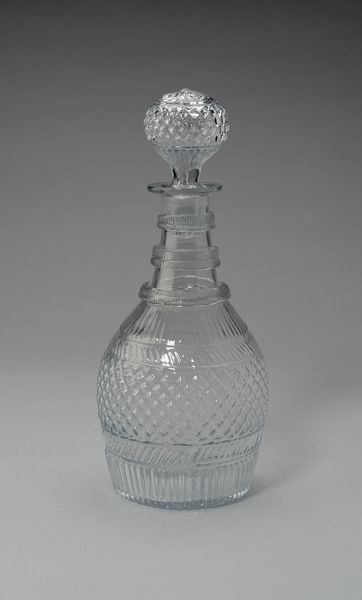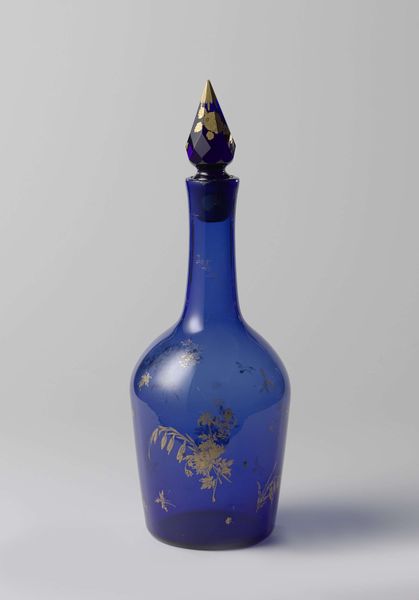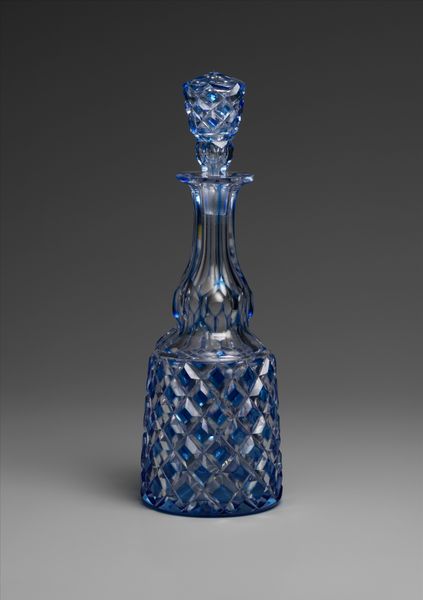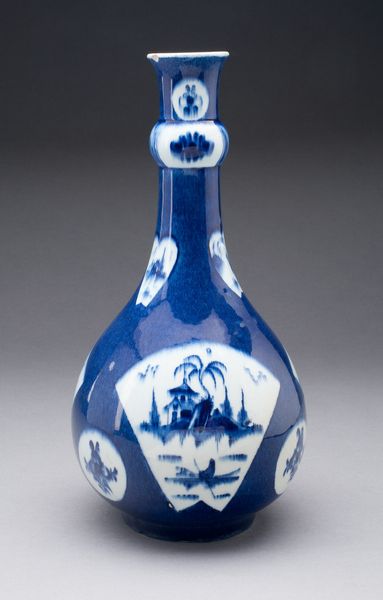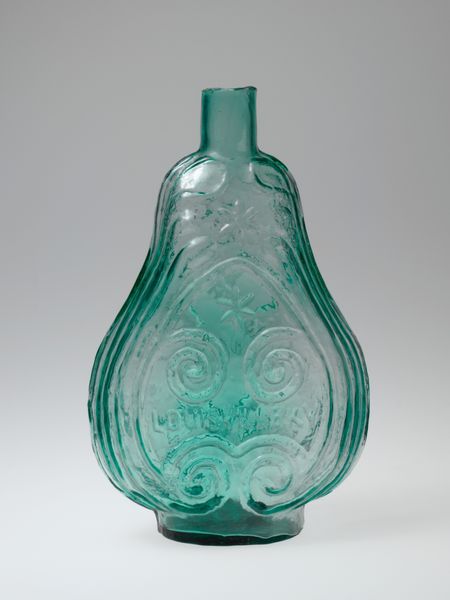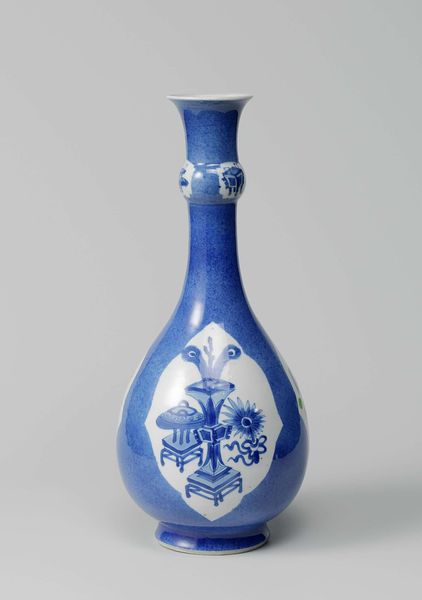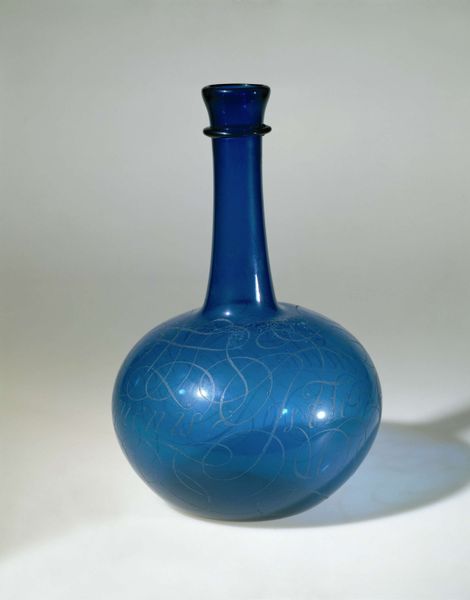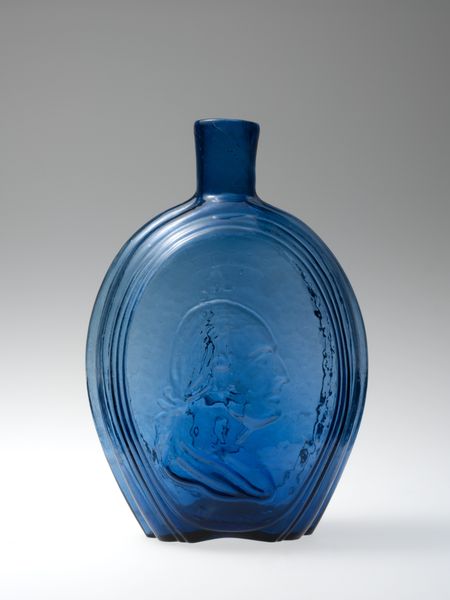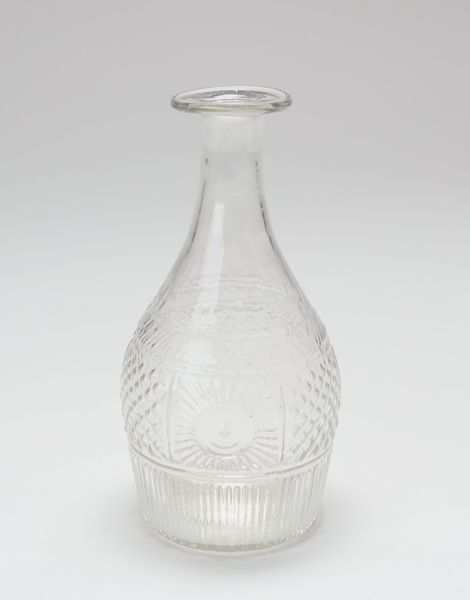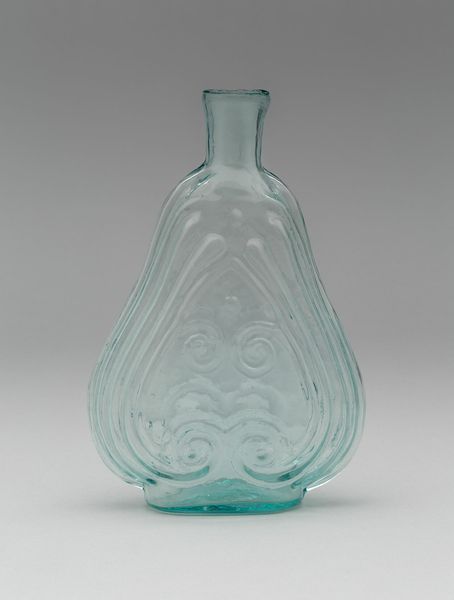
glass
#
form
#
glass
#
decorative-art
Dimensions: 28.6 × 11.4 × 11.7 cm (11 1/4 × 4 1/2 × 4 5/8 in.)
Copyright: Public Domain
Curator: Here we have a vibrant blue glass decanter, estimated to be from the 1830s, crafted by the Boston and Sandwich Glass Company. Editor: The first word that comes to mind is opulent. That cobalt blue is so intense. I'm immediately struck by how weighty it appears and the repetition of the vertical ribbed patterns across the entire body— almost rhythmic, isn’t it? Curator: It speaks volumes about the burgeoning glass industry in the United States at the time. Boston and Sandwich were pioneers in pressed glass techniques, allowing for mass production of elaborate designs. Consider the skilled labor involved in melting, shaping, and decorating each piece to meet demand and achieve beauty in a functional item. Editor: Indeed. It represents both luxury and aspiration. The blue hue, commonly associated with wealth, would have brought a sense of elevated status into the homes that owned such an object. Blue dyes had complex recipes and so owning something made with this color signified prosperity. But I wonder, beyond simple decoration, how this decanter might have participated in broader cultural rituals of consumption. What would have been contained inside? And who were the hands filling it? Curator: A crucial question. And what can we discern from the manufacturing process? The proliferation of these decorative glass objects hints at an expanding consumer culture in early 19th-century America and its dependency on immigrant and increasingly exploited laborers, mainly of European descent. The rise of industrial techniques such as glass pressing definitely had material consequences that we shouldn't overlook. Editor: Right. And to circle back to where we began: it would be interesting to situate this vessel as more than just a container for liquor but as an artefact which speaks about industrialisation, gendered and racialed dynamics, and the evolution of class. This beautiful object, therefore, should beckon deeper inquiry of those systems and power structures that gave it shape. Curator: Indeed. Appreciating this glass decanter isn't solely about aesthetics, but a means to understand the processes of labor and the evolution of manufacturing during a key point in American history. Editor: I’m left with questions on the lives that were simultaneously reflected and possibly constrained by it.
Comments
No comments
Be the first to comment and join the conversation on the ultimate creative platform.
